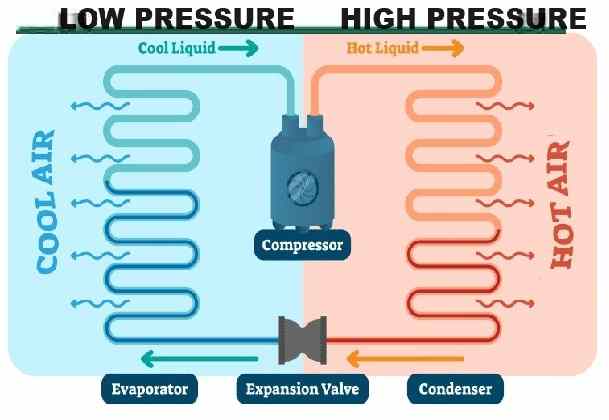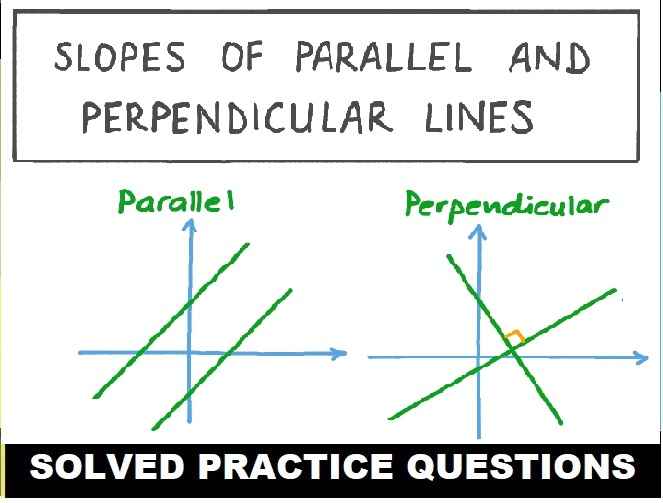Heat Transfer Numerical on Thermal Conductivity and Newton’s Law of Cooling Class-11 Nootan Physics Solutions Ch-18. Step by step solutions of Kumar and Mittal Physics of Nageen Prakashan as council latest prescribe guideline for upcoming exam. Visit official Website CISCE for detail information about ISC Board Class-11 Physics.

Heat Transfer Numerical on Thermal Conductivity and Newton’s Law of Cooling Class-11 Nootan Physics Solutions
| Board | ISC |
| Class | 11 |
| Subject | Physics |
| Book | Nootan |
| Chapter-18 | Heat Transfer |
| Topics | Numerical on Thermal Conductivity and Newton’s Law of Cooling |
| Academic Session | 2024-2025 |
Numerical on Thermal Conductivity and Newton’s Law of Cooling
( Heat Transfer ISC Class-11 Nootan Physics Solutions Ch-18 solutions of Kumar and Mittal )
Que-1: The cross-sectional area of a brick wall is 2.0 m² and its thickness is 12 cm. If the difference of temperature between the two sides of the wall is 24°C, calculate the amount of heat flowing through the wall in 1 hour. The thermal conductivity of brick is 0.13 J s^-1 m^-1 °C^-1.
Ans: Q = (k A (θ1 – θ2) / l) x t
=> (0.13 x 2 x 24 / 0.12) x 60 x 60
=> 1.872 x 10^5 J
Que-2: The area of cross-section of an iron plate of thickness 2 cm is 5000 cm². The temperatures of its surfaces are 150°C and 140°C respectively. Calculate the rate of heat transmitted through this plate. Coefficient of thermal conductivity of iron is 0.015 kcal s^-1 m^-1 °C^-1.
Ans-2 H = Q / t = k A (θ1 – θ2) / l
=> 0.015 x 5000 x 10^-4 (150 – 140) / 2 x 10^-2
=> 3.75 kcal s^-1
Que-3: The temperature difference between the ends of a rod of aluminium of length 1.0 m and area of cross-section 5.0 cm² is 200°C. How much heat will flow through the rod in 5 minutes? The coefficient of thermal conductivity of aluminium is 0.2 KJ s^-1 m^-1 °C^-1.
Ans: Q = (k A (θ1 – θ2) / l) x t
=> (0.2 x 10^3 x 5 x 10^-4 x 200 / 1.0) x 5 x 60
=> 6000 J
Que-4: If we use 12 mm thick special glass in the windows of a room, instead of 3 mm thick ordinary glass, and the temperature inside the room is higher than that outside by 10°C, then how much heat per hour will be prevented from going out? The total area of glass is 5 m² and the thermal conductivity is 2 x 10^4 kcal s^-1 m^-1 °C^-1.
Ans: Q = (k A (θ1 – θ2) / l) x t
=> (2 x 10^-4 x 5 x 10 x 60 x 60) / (12 x 10^-3)
=> 9000 kcal
Que-5: One end of each of the two rods A and B of same metal and same area of cross-section has been immersed in ice at 0°C. In which rod will the rate of heat- conduction be more when: (1) their other ends are at 20°C and 30°C respectively and the length of A is half the length of B, (ii) their ends are at 20°C and 10°C respectively the length of A is twice the length of B.
Ans: H = (k A (θ1 – θ2) / l) {θ2 = 0°}
=> H = k A θ1 / l
Ha / Hb = (20 / 30) x (l x 2 / l) = 4/3
∴ Ha > Hb
again Ha / Hb = (20 / 10) x (l / 2 l)
=> 1 : 1
Que-6: The thickness of a sheet of nickel is 0.4 cm. The temperature difference between its two faces is 32°C. It transmits heat through an area of 5 cm² at a rate of 200 kcal h^-1. Calculate the coefficient of thermal conductivity of nickel.
Ans: H = (k A (θ1 – θ2) / l)
k = h l / A (θ1 – θ2)
=> (200 x 0.4 x 10^-2) x (5 x 10^-2 x 32)
=> 1.39 x 10^-2 kcal s^-1 m^-1 °C^-1
Que-7: The opposite faces of an iron cube are in steam (100°C) and in ice (0°C). Each side of the cube is 2 cm and the thermal conductivity of iron is 0.2 kcal s^-1 m^-1 °C^-1. How much ice will melt in 5 minutes? Latent heat of ice is 80 Cal g^-1.
Ans: Q = m L
=> (k A (θ1 – θ2) / l) x t = m L
=> 0.2 x (2 x 10^-2)² x (100 – 0) x 5 x 60 / 2 x 10^-2 = m x 80
=> m = 150 g
Que-8: Two vessels of different materials are identical in size and wall-thickness. They are filled with equal quantities of ice at 0°C. If the ice melts completely in 10 and 25 minutes respectively then compare the coefficients of thermal conductivity of the materials of the vessels.
Ans: Q = (k1 A (θ1 – θ2) / l) x t1 = (k2 A (θ1 – θ2) / l) x t2
=> k1 / k2 = t2 / t1 = 25 / 10 = 5 / 2
=> k1 : k2 = 5 : 2
Que-9: One end of a 25 cm long metal bar is in steam and the other is in contact with ice. If 12 g of ice melts per minute, what is the thermal conductivity of the metal? Cross-section of the bar is 5 cm² and latent heat of ice is 3.4 × 10^5 J kg^-1.
Ans: Q = (k A (θ1 – θ2) / l) x t = m L
=> k = (m L x l) / A (θ1 – θ2) t
=> (12 x 10^-3 x 3.4 x 10^5 x 25 x 10^-2) / (5 x 10^-4 x (100 – 0) x 60)
=> 3.4 x 10² J s^-1 m^-1 °C^-1
Que-10: Two rods of same metal and of same cross-section have lengths 0.5 m and 0.8 m. The temperature difference across the ends of the first rod is 40°C. Find the temperature difference across the second rod, if the rate of heat conduction is equal in both the rods.
Ans: H = (k A (θ1 – θ2) / l)
=> H1 / H2 = [(θ1 – θ2)1 / (θ1 – θ2)2] x (l2 / l1) = 1
=> (θ1 – θ2)1 / (θ1 – θ2)2 = l1 / l2 = 40 / (θ1 – θ2)2 = 0.5 / 0.8
=> (θ1 – θ2)2 = 40 x 0.8 / 0.5 = 64 °C
Que-11: The temperature difference between the two ends of a bar 1.0 m long is 50°C and that for the other bar 1.25 m long 75°C. Both the bars have same area of cross-section. If the rates of conduction of heat in the two bars are the same, find the ratio of the coefficients of thermal conductivity of the materials of the two bars. If both the bars are of same metal, find the ratio of the rates of heat conduction in them.
Ans: H = (k1 A (θ1 – θ2) / l1) = (k2 A (θ1 – θ2) / l2)
=> k1 / k2 = [(θ1 – θ2)2 x l1] / [(θ1 – θ2)1 x l2] = (75 / 50) x (1 / 1.25)
=> 6 : 5
again H1 / H2 = [(θ1 – θ2)1 / (θ1 – θ2)2] x (l2 / l1)
=> (50 / 75) x (1.25 / 1)
=> 5 : 6
Que-12: Three thermometers A, B and C read respectively 36°C, 32°C and 27°C. A lies between the body and vest of a man, B between vest and the shirt and C between the shirt and the coat. If the vest and the shirt are equally thick, calculate the ratio of their thermal conductivities.
Ans: H = (k1 A (θ1 – θ2) / l) = (k2 A (θ1 – θ2) / l)
=> k1 / k2 = (θ1 – θ2)2 / (θ1 – θ2)1 = (32 – 27) / (36 – 32)
=> k1 / k2 = 5 / 4
=> k1 : k2 = 5 : 4
Que-13: The ratio of the areas of cross-section of two rods of different materials is 1 : 2 and the ratio of the thermal conductivities of their materials is 4 : 3. On keeping equal temperature – difference between the ends of these rods, the rate of conduction of heat are equal. Determine the ratio of the lengths of the rods.
Ans-13 H = (k1 A (θ1 – θ2) / l1) = (k2 A (θ1 – θ2) / l2)
=> l1 / l2 = k1 A1 / k2 A2 = (4/3) x (1/2)
=> l1 : l2 = 2 : 3
Q-14. Two vessels of different materials are identical in size and shape. Both are filled with equal masses of boiled water and are placed on the same heater. If thermal conductivities of the metals of the vessels be 5 x 10^-2 and 3 × 10^-2 kcal s^-1 m^-1 °C^-1. respectively, then calculate the ratio of the timings taken by the water in the vessels to convert into steam.
Ans: Q = (k1 A (θ1 – θ2) / l) x t1 = (k2 A (θ1 – θ2) / l) x t2
=> k1 / k2 = t2 / t1 = 3 x 10^-2 / 5 x 10^-2
=> t2 : t1 = 3 : 5
Que-15: The plane surfaces of two sheets of different metals are kept in contact with each other. The thicknesses of sheets are 2.5 cm and 3.0 cm respectively and the ratio of their thermal conductivities in the same order is 5: 6. If the outer surfaces of the sheets are at constant temperatures of 100°C and 10°C respectively, calculate the temperature of interface.
Ans: H = (k1 A (θ1 – θ) / l1) = (k2 A (θ – θ2) / l2)
=> (θ1 – θ) / (θ – θ2) = k2 A l1 / k1 A l2 = (6 / 5) x (2.5 / 3.0)
=> 100 – θ / θ – 10 = 1
=> 100 – θ = θ – 10
=> θ = 55 °C
Que-16: A liquid initially at 70°C cools to 55°C in 5 minutes and 45°C in 10 minutes. What is the temperature of the surroundings?
Ans: (θ1 – θ2) / t = k {[(θ1 + θ2) / 2] – θ0} {θ0 => temp of surrounding}
=> 70 – 55 / 5 = k [(70 + 55) / 2 – θ0] ——–(i)
=> 70 – 45 / 10 = k [(70 + 45) / 2 – θ0] ——–(ii)
on solving θ0 = 25°C
Que-17: A pan filled with hot food cools from 94°C to 86°C in 2 minutes when the room temperature is at 20°C. How long will it take the cool from 71°C to 69°C?
Ans: 94 – 86 / 2 = k [(94 + 86) / 2 – 20] ——(i)
=> 71 – 69 / t = k [(71 + 69) / 2 – 20] ——-(ii)
from eq. (i) and (ii)
=> 4 t / 2 = 70 / 50
=> t = 70 / 100 = 0.7 min = 42 s
— : end of Heat Transfer Numerical on Thermal Conductivity and Newton’s Law of Cooling Class-11 Nootan ISC Physics Solutions :–
Return to : – Nootan Solutions for ISC Class-11 Physics
Thanks
Please Share with your friends if helpful


